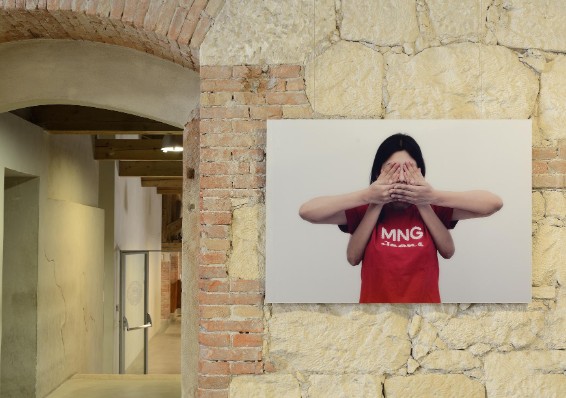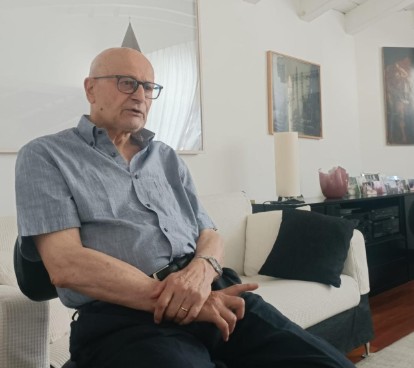Collector of Meaning. Giorgio Fasol and the Art of Listening to the Present
This essay frames Giorgio (and Anna) Fasol’s AGI Verona Collection as a practice of cultural stewardship defined by immediacy, prescience, and civic intentionality. Rather than a catalogue of connoisseurship, the collection reads as an operative vocabulary—a method in which acquisition functions as testimony, pedagogy and urban infrastructure. Below follows a curatorial essay that moves from anecdote to structural interpretation, orienting the narrative toward the question that animates the Fasols’ work: how does one collect so that art becomes a civic and intellectual public good?
COLLECTORS OF MEANING: WHEN ART BECOMES A RESPONSIBILITY
Charlotte Madeleine CASTELLI
8/10/20253 min read


To call Giorgio Fasol a collector is to risk underplaying the ethical and civic bandwidth of his gesture. What he and Anna Pedron have assembled under the rubric of the AGI Verona Collection is less an aggregation of prized objects than a sustained argument about what a collection can do — for artists, for a city, for an academy, and for the unpredictability of cultural time. Fasol’s practice is animated by what he names la scintilla: that sudden, irreducible flash of recognition that converts attention into commitment. It is this “spark” — instantaneous, emotive, and nonprogrammatic — that informs both his acquisitions and his philanthropy.
The biographical traces we are given — Saturdays spent catching the 1:00 PM train, evenings returned on the 8:00 PM service; five to seven gallery visits in a single day; the visual accumulation that produces selection — are not merely charming recollections. They are evidence of a discipline built around exposure and endurance, an ethic that privileges exposure to risk and novelty over calculated market strategy. “Buying an artwork is an act of love,” Fasol says; the aphorism functions here as methodological confession. Love, in his lexicon, is not sentimentalism but an enactment of fiduciary faith in forms yet unassimilated by taste or by price. That faith has a formal aspect — the collector’s proclivity for discovery — and a civic aspect: the reinvestment of resources to sustain the very emergence of new voices. Sales are anecdotal rather than programmatic; when works are deaccessioned — rarely, and only once or twice a year — proceeds are recirculated to underwrite youthful practice. In this regard Fasol’s approach is resolutely non-speculative: the collection’s capital is cultural, its return measured in opportunity and expanded discourse rather than in ledger profit.
A telling episode exemplifies his mode. Confronted with the possibility of acquiring a work by Lucio Fontana, Fasol negotiated from a position of desire rather than liquidity: “They asked three million. I had one million. I said, ‘Let’s make a contract: I leave the work, I give one million as a deposit, and when I have the rest — I will bring it, without a fixed timetable.’” The concession granted by the seller — who, impressed, perceived novelty in the proposal — narrates an exchange that is at once entrepreneurial and romantic. It is instructive that the same encounter yielded another revelation: the seller pointed to a Kounellis canvas, a work whose austerity and audacity would prove, in Fasol’s memory, a peer of the more canonical choice. The anecdote is instructive not for gossip but for what it discloses about criteria of judgment: Fasol’s eye privileges electrifying dissonance over predictable prestige.
Perhaps the most consequential dimension of the AGI Verona project is its planned afterlife. The modal donation of over one hundred works to the University of Verona — effectuated in the institutional birth of the Museo del Contemporaneo (March 2025) — is not a simple transfer of property but a rhetorical recast of the university itself. As Monica Molteni and Jessica Bianchera have documented, the 2019 initiative proposed that the academy not only house works, but activate them: research, teaching, public programming, artist residencies, and an open-door civic hospitality that enfranchises the city. The donation modality demanded an institutional choreography that converts holdings into practices: conservation married to curiosity, storage to pedagogy, collection to conversation.
Seen through this lens, the AGI Verona Collection becomes infrastructural. Fasol imagines art as utility — not utilitarian, but infrastructural in the civic sense: a public system as ordinary and indispensible as street lighting, one that animates quotidian life and calibrates a city’s moral imagination. Art here is an instrument of negotiation and dissent, a device that instantiates publicness within university corridors and urban thresholds. The museum that emerges from the donation is therefore less mausoleum than agora: a place where objects are interlocutors, where students, faculty and passersby can be provoked into new attentions. If there is an ethical lesson in this trajectory, it is pedagogical: to learn how to recognise and cultivate the scintilla is to practice an attentiveness that sustains culture itself. Fasol’s legacy — and the institutional architecture that receives it — is a prompt to a broader public: to attend, to risk, to invest not merely capital but belief. In an age in which collections can ossify into trophies or commodities, the AGI Verona example is a model of how collecting can be reimagined as an act of civic care — a continuous apprenticeship in listening to the present as a gesture of trust toward the future.
© Charlotte Madeleine Castelli | All rights reserved


